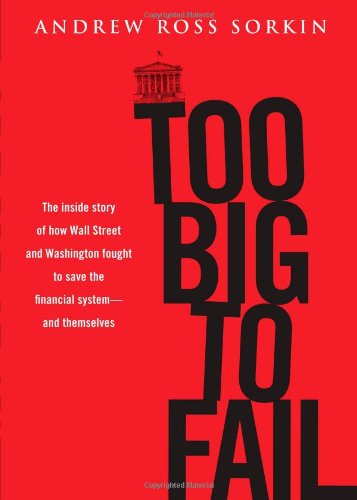Banks too big to fail, made bigger by government intervention. Banks bailed out by recession-burdened taxpayers, now fighting to retain mind-boggling bonuses. The same banks, now fighting tooth and nail to obstruct regulatory efforts to keep it from happening again. How did we get here? With impressive and fascinating detail, Too Big To Fail aims to document exactly how it all went down.
Whether you’re more concerned that the government stepped in to control the industry — or that the it now appears to be beyond the control of the government — if you’ve got strong opinions about the financial crisis and financial regulation, you’ll appreciate Andrew Ross Sorkin’s meticulously researched account of how the intervention went down. Even though many of the players and the outlines of the negotiations were publicized in mainstream media, the details covered in this book — such as emails and texts exchanged, the timing, location, participants and even dialogue of the desperate meetings, and even an image of Hank Paulson’s appointment book — give you a vivid sense of the characters and the pace and stress of the various meltdowns and interventions.
It may even change your mind about some of the people involved — even if it doesn’t change how you view the end results of their actions. (A New York Times reporter and columnist, Sorkin had a ringside seat to the action, allowing him to capture a nearly complete accounting of how the deals went down, but he mostly leaves his opinions out.)
Bottom line: if you’re interested in Wall Street, following the twists and turns of the financial industry, or you’re a fan of previous business-insider bestsellers like Den of Thieves, Barbarians at the Gate
and When Genius Failed: The Rise and Fall of Long-Term Capital Management
, the fast-pace and juicy details of Too Big should provide you a satisfying and engaging read.

